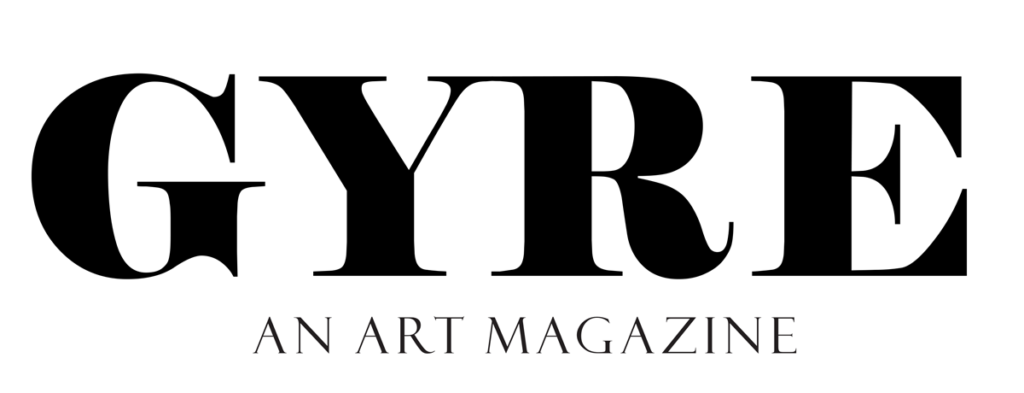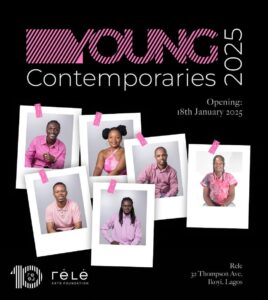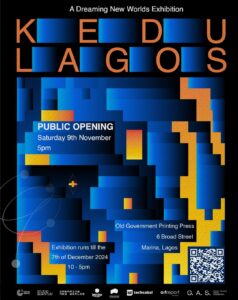
Mathew Oyedele
Standing before the works of Bolaji Ogunwo, one might be tempted to ask if his paintings are impressionistic or surreal, as his use of imagery can be elusive at first glance. However, taking a few steps back and observing with a discerning eye will reveal hidden visual elements behind his heavily pixelated impasto. This layered experience was palpable at the opening of Cutting Edge, a duo exhibition featuring Ogunwo and Timi Kakandar at the National Museum, Onikan, Lagos.
Ogunwo’s journey as an artist is marked by a deep commitment to continuous learning and evolution. After obtaining his Bachelor’s Degree from the University of Benin in 2000, he pursued a Master’s Degree in Painting at the University of Lagos and later completed his PhD in Painting at Delta State University, Abraka. Throughout his academic journey, Ogunwo remained rooted in impressionism, yet he has consistently pushed the boundaries of his practice. In 2020, he began exploring pixelated illustration, seeking to expand his impressionistic outlook and extend his oeuvre. This exploration culminated in Terra Firma, his sixth solo exhibition held at the National Museum, Onikan, in 2023, where he drew from his vibrant palette to emphasize abundance rather than scarcity. His subject matter remains familiar, but his technique continues to evolve—a mark of an artist who embraces evolution over stagnation.
In Cutting Edge, Ogunwo did not exhibit alone; he collaborated with Timi Kakandar to present a duo exhibition that emphasizes collaboration and togetherness in a colorful and minimalist manner. Kakandar, influenced by his father, a Canadian-trained cartographer and architect, began his artistic practice shortly after graduating from the University of Port Harcourt in 1999. Much like Ogunwo, who has carved a niche for himself with his impressionist impasto, Kakandar has distinguished himself through his draughtsmanship, vibrant use of color, and storytelling. His use of bright, raw colors and gestural lines reveals a close affinity with Fauvism.
Ogunwo’s work Compassion showcases the advanced stage of his blurred representational form. The painting features hazy pixels and blocks of bright and cool colours that draw the viewer’s eye across the canvas, creating a harmonious aesthetic. This technique is similarly employed in In The Works, which delineates a blurred figure of a woman in motion. Other paintings in the exhibition—Responsibility, Wind of Change, Mindset (Study Series), One Accord, Prayer Walk, and Duet—while not rendered in pixels, are richly textured, addressing and proposing solutions to socio-economic issues in the nation. Ogunwo’s ability to manipulate basic elements to create visually cohesive and meaningful pieces underscores his commitment to continuous research and evolution in his practice.
Kakandar, on the other hand, continues his exploration of handwoven traditional hairstyles as metaphors for storytelling. This direction, first explored in 2020 by the artist, employs hairstyles as fruit-bearing trees to describe the interconnectedness of the human race. In Cutting Edge, he adds a twist to this narrative, drawing on nostalgia while maintaining his Fauvist approach. His canvases are rendered like playing cards, where images appear in duality—one upright and one inverted. He further enhances this concept by incorporating fabric collage into the canvases, emphasizing the representational approach to the cards and exploring the dual nature of humans. Symbols and elements play a crucial role in Kakandar’s work, as seen in his use of traditional hair combs and ancestral stools, adding multiple layers to his subject matter.
Cutting Edge succeeds in showcasing the cutting-edge practices of two artists who, while rooted in tradition, are unafraid to evolve and collaborate in their pursuit of artistic expression. They embody what the curator, Temitope Oladeji asserts: “These artists cannot be pinned down to one idea…”
Mathew Oyedele is a curator and art historian working in Lagos, Nigeria.



